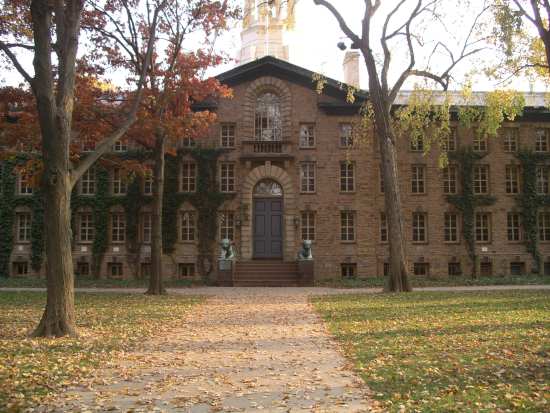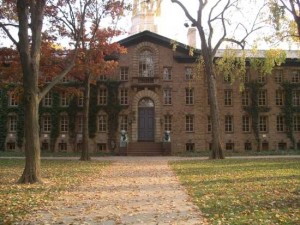
A Partial Solution to the Problem of Student Loan Debt
By Dale Glading | The Save Jersey Blog
 The year was 1973 and I was in the 8th grade. The physical education teacher at our school thought it would be a good idea to see how many students could qualify for the President’s Physical Fitness Award.
The year was 1973 and I was in the 8th grade. The physical education teacher at our school thought it would be a good idea to see how many students could qualify for the President’s Physical Fitness Award.
For whatever reason, one of the requirements was to walk half a mile. Two trips around the track, I thought. Piece of cake.
Except that these weren’t to be solo laps. On the contrary, they were to be completed with one student carrying another student on his or her back.
“Houston, we have a problem.”
You see, in 8th grade, I stood just over five feet tall and weighed less than 90 pounds soaking wet. The classmate that I was paired with outweighed me by at least 20 pounds, perhaps more.
Ouch!
Now you know what it is like being a young adult in the United States today.
Walking around life’s track is hard enough as it is. Carrying the extra burden of tens of thousands of dollars in student loan debt makes that journey far more arduous. Add the $55,000 of debt that each American citizen “owes” as part of our $17 trillion national debt and the load becomes unbearable.
Now factor in the $126 trillion in unfunded liabilities that the U.S. government is currently on the hook for and you have created a mountain so steep that not even the fittest of hikers can climb it.
Perhaps Mike Rowe, the host of the TV show “Dirty Jobs,” put it best: “We’re lending money we don’t have, to kids who will never be able to pay it back, for jobs that no longer exist.”
So what is the solution? Washington has more than its share of critics and deservedly so. But what is sorely needed are creative answers to our most intransient and seemingly insurmountable problems, such as those faced by the Millennial generation.
As revolutionary as it may sound, a partial solution may be to reduce the size and availability of federally-subsidized student loans.
Please stop gasping and follow my logic for a minute.
It is no secret that colleges and universities base their tuition rates in part on the average amount of financial aid that their students receive. The more financial aid that is available, the higher the tuition rates climb.
When this happens, students lose and so do taxpayers who subsidize the loans. Colleges – most of which already have healthy endowment funds – and private lending institutions win.
Limiting the size and availability of student loans would have the dual effect of lowering tuition rates and as a result, reducing overall student debt.
A secondary benefit would be that young adults better suited for trade or technical schools would not feel pressured to enroll in four-year institutions simply because financial aid was plentiful. Instead, they could enter the work force faster and less encumbered with debt.
Life is not one size fits all. My daughter, who earned a masters degree, is engaged to be married to a young man who is a welder. He never went to college and yet, guess who earns more and has less personal debt?
Rather than making vocational students feel like they have underachieved by foregoing a college education, we should be celebrating the differences that exist in today’s young people.
After all, America was built as much by carpenters, machinists and common laborers as it was by academicians.


